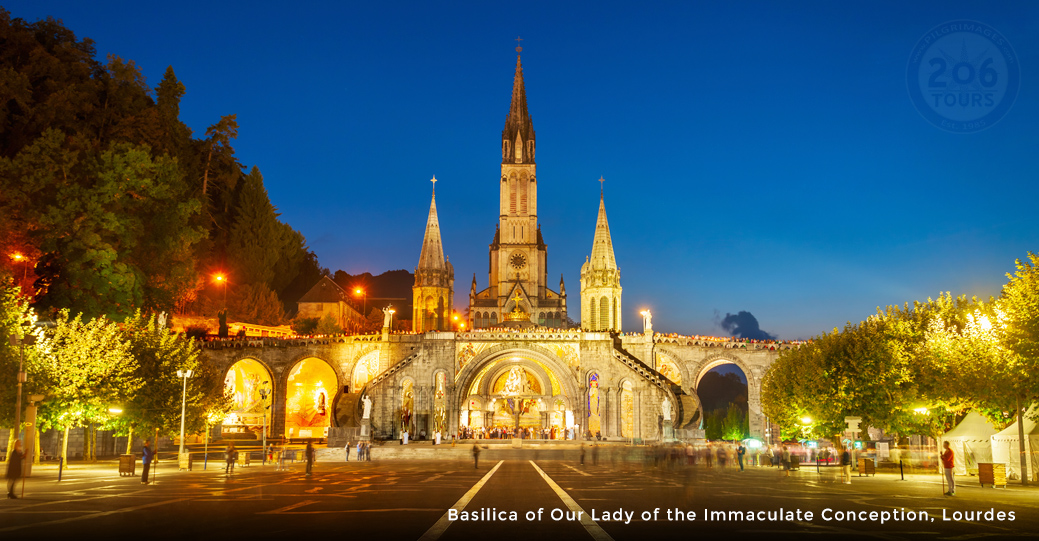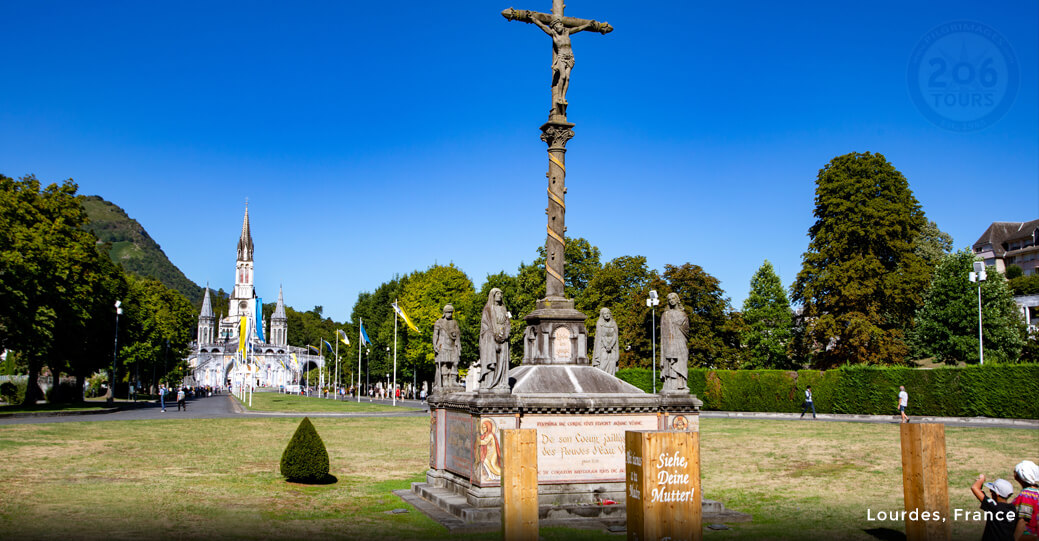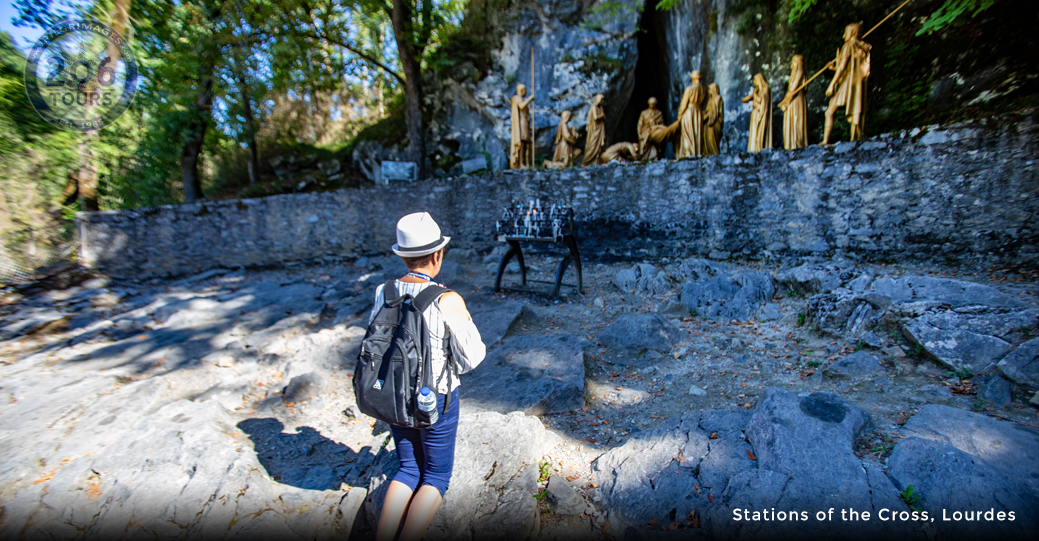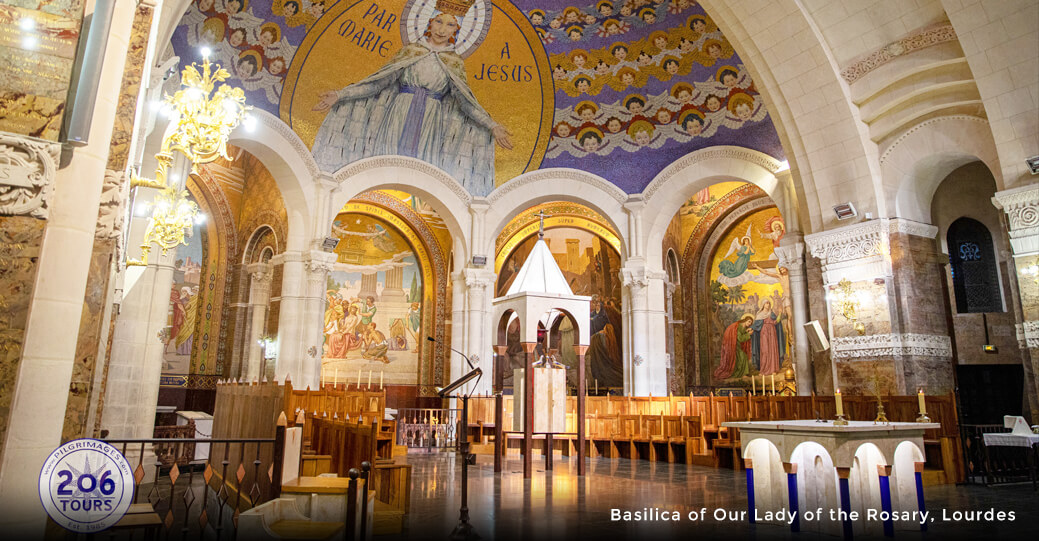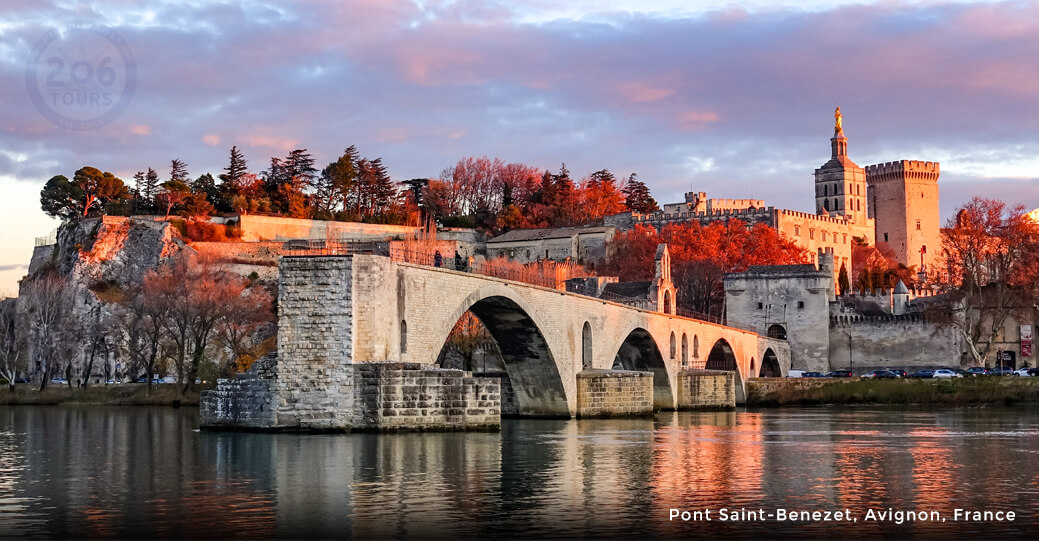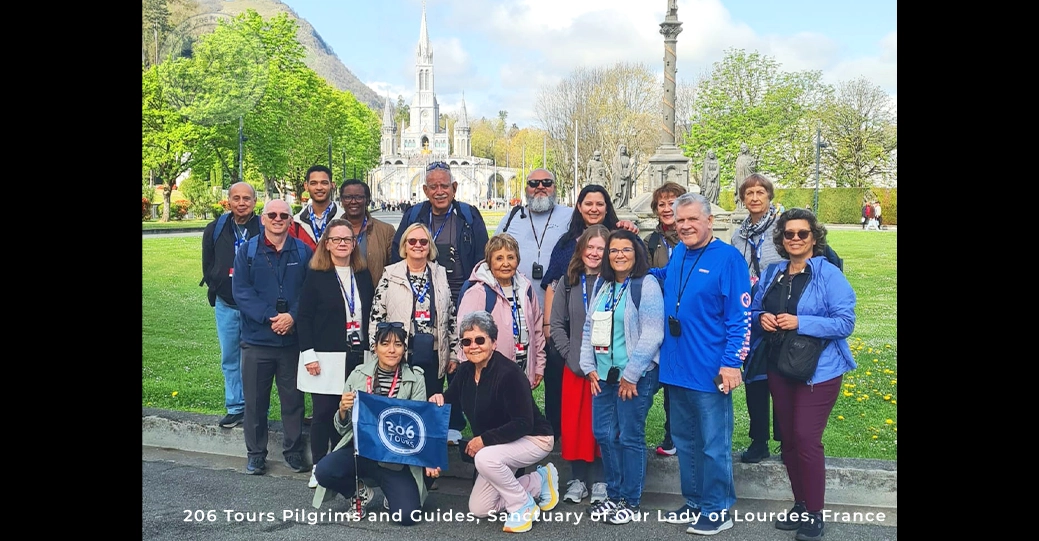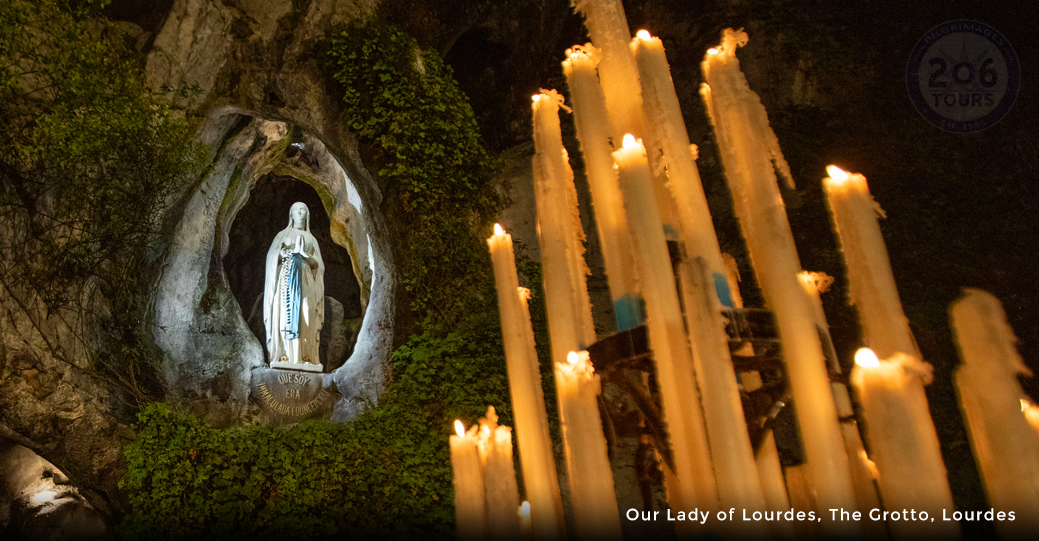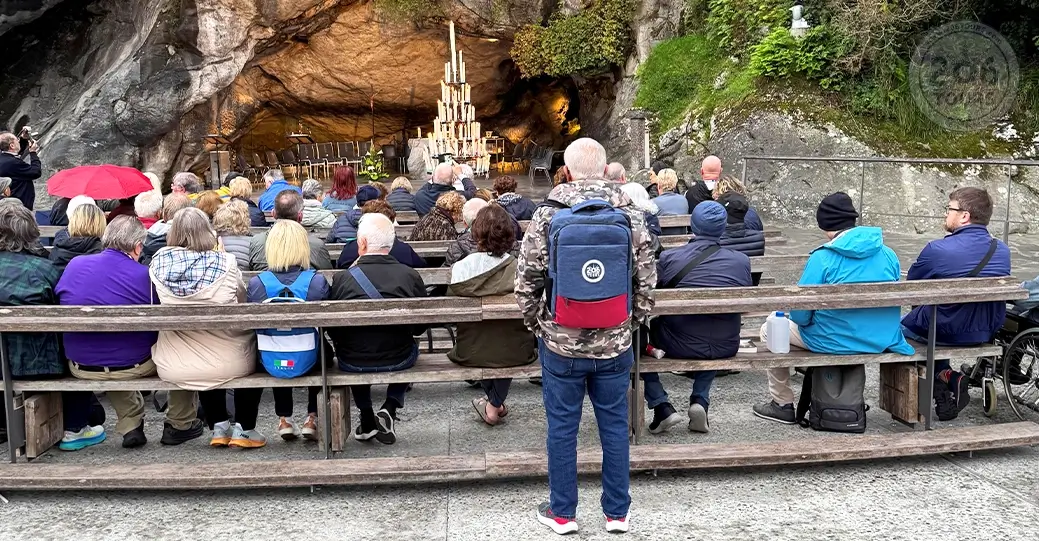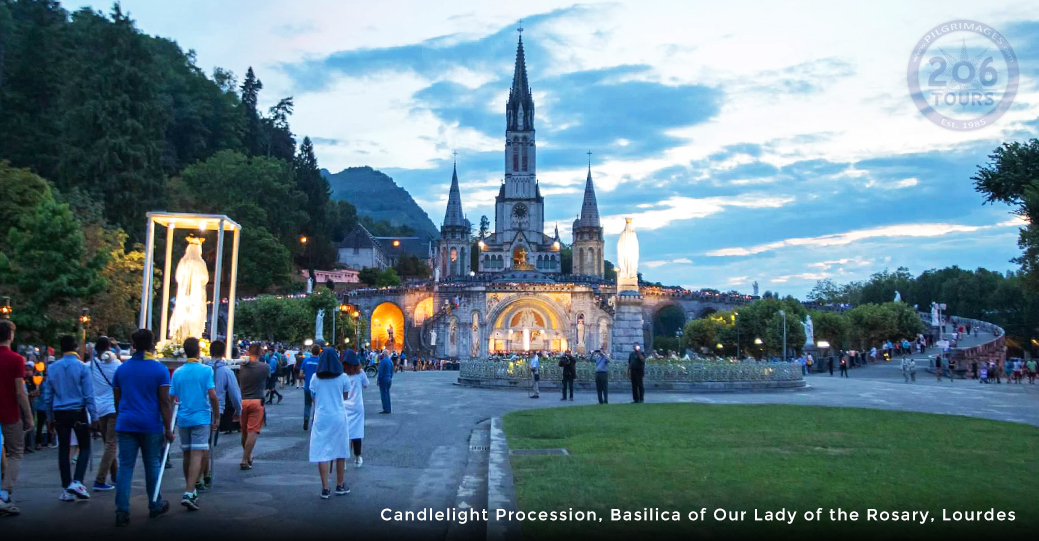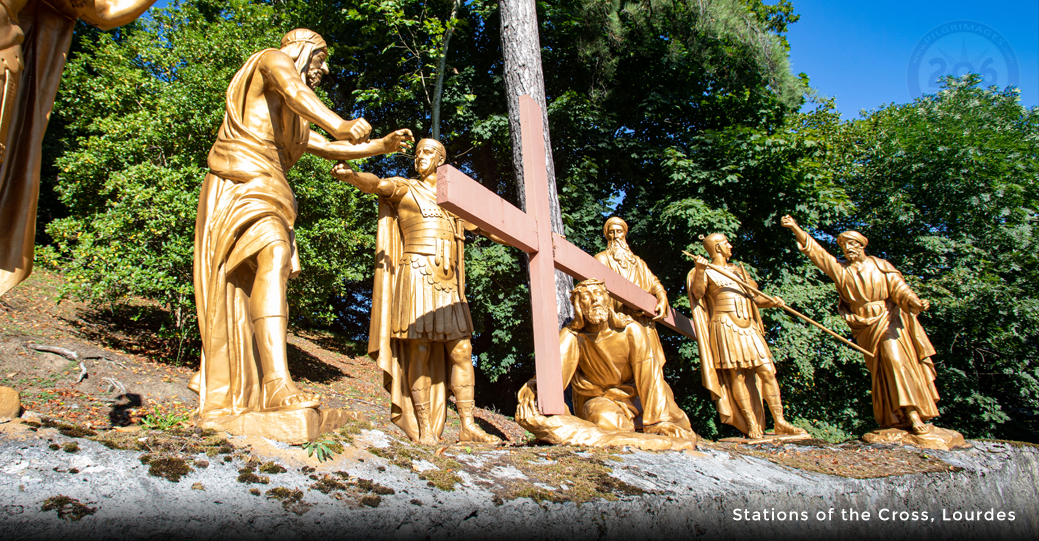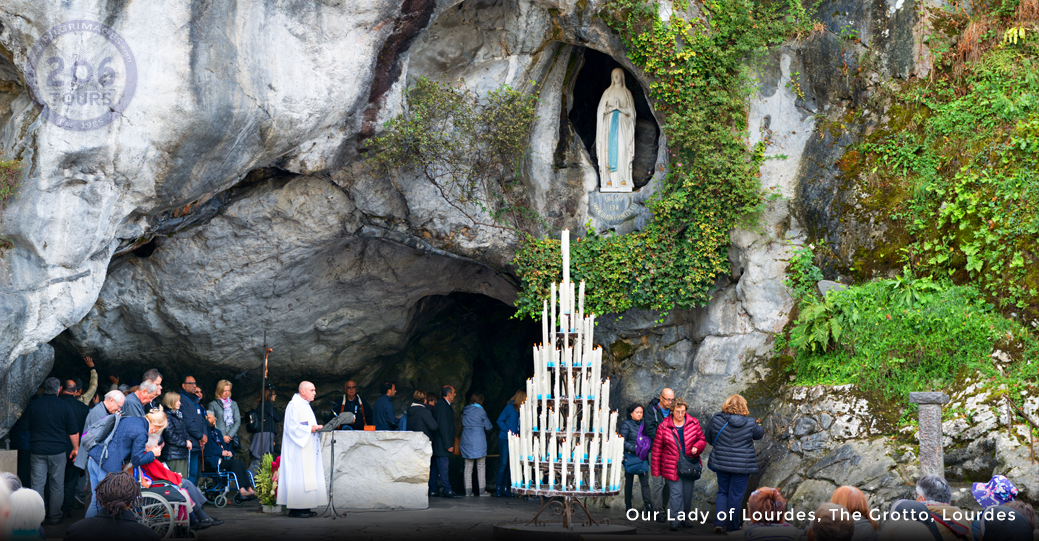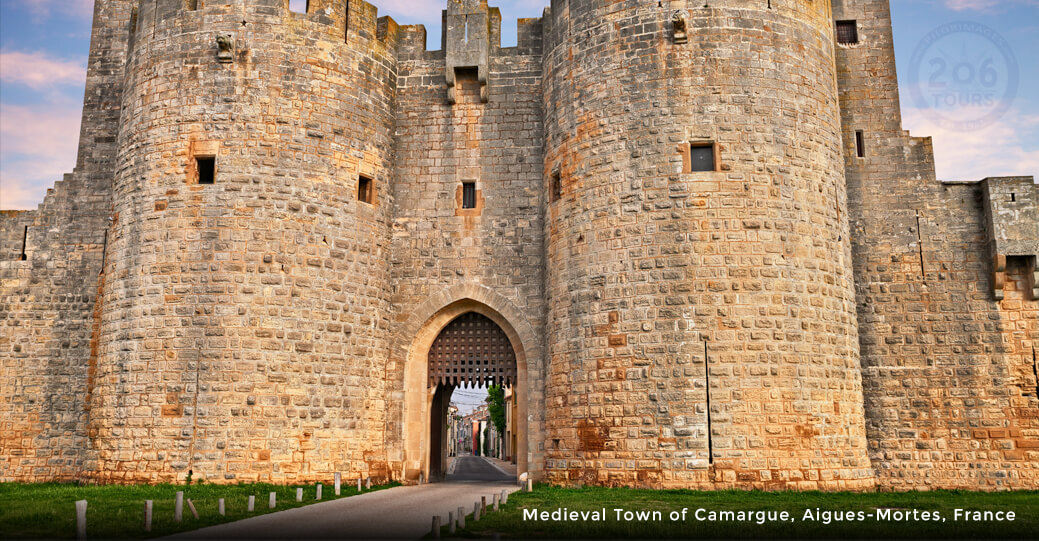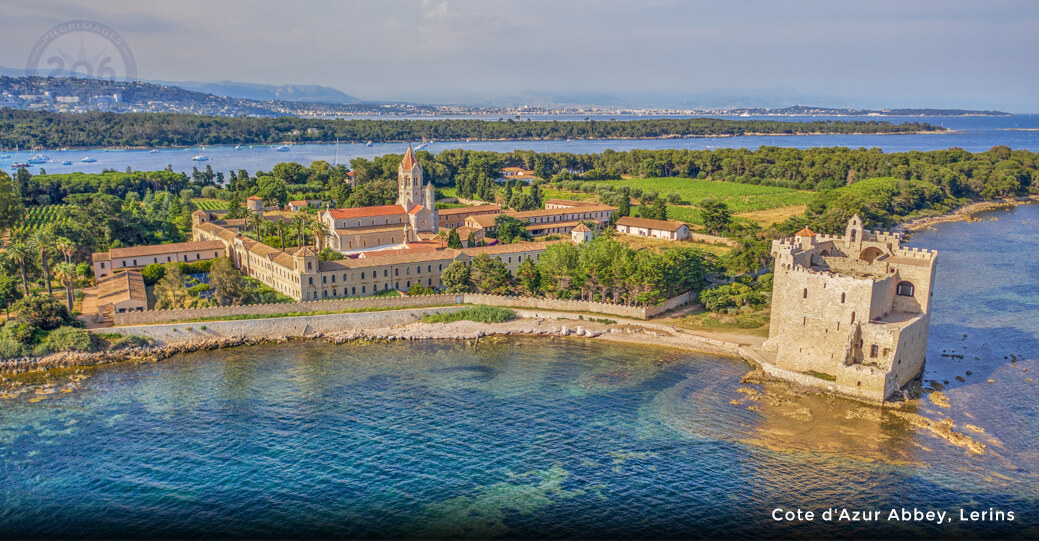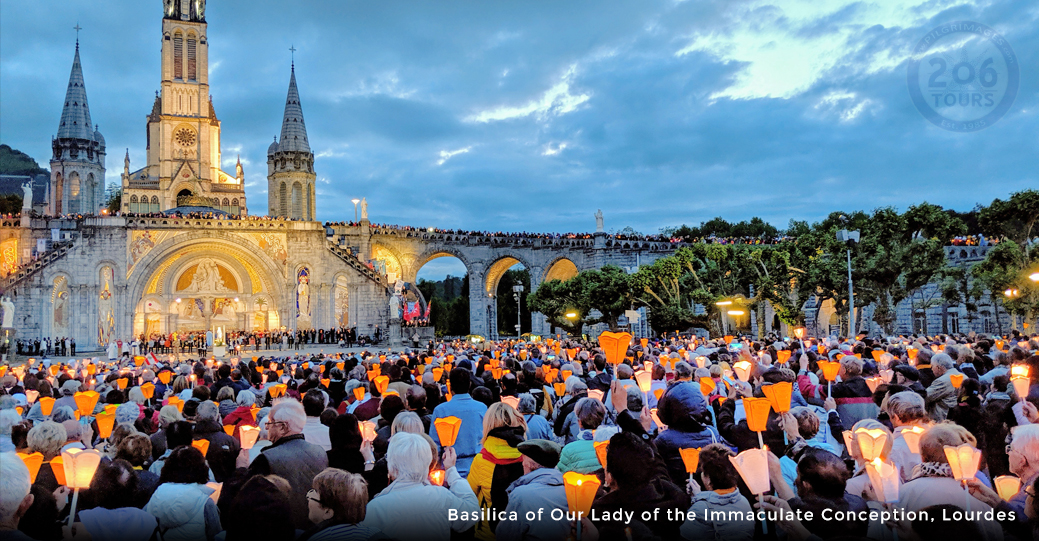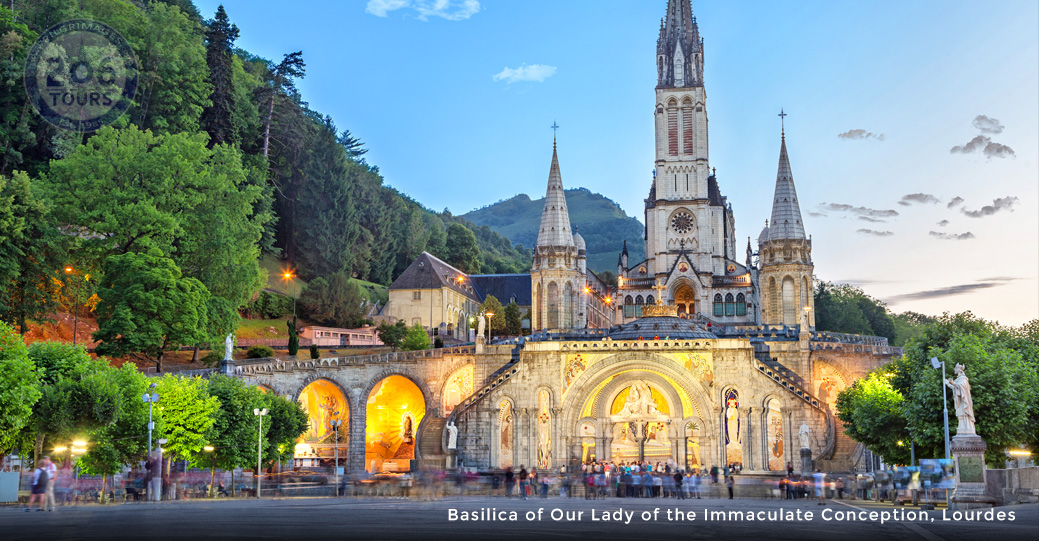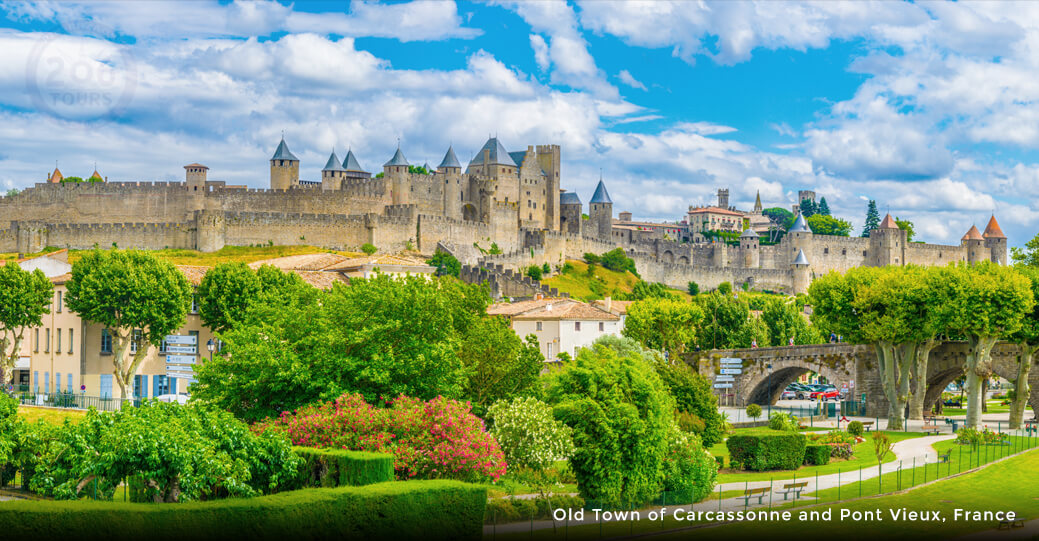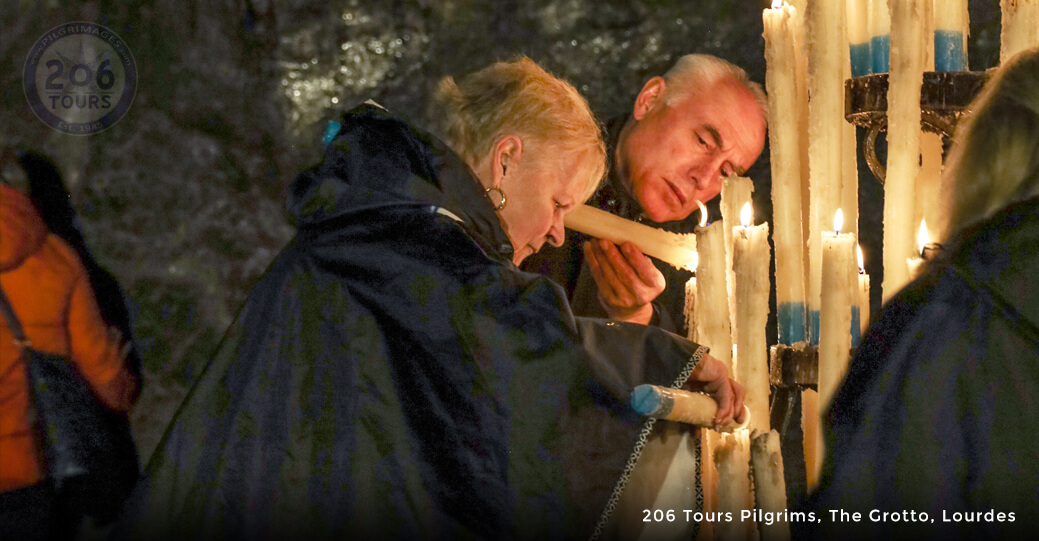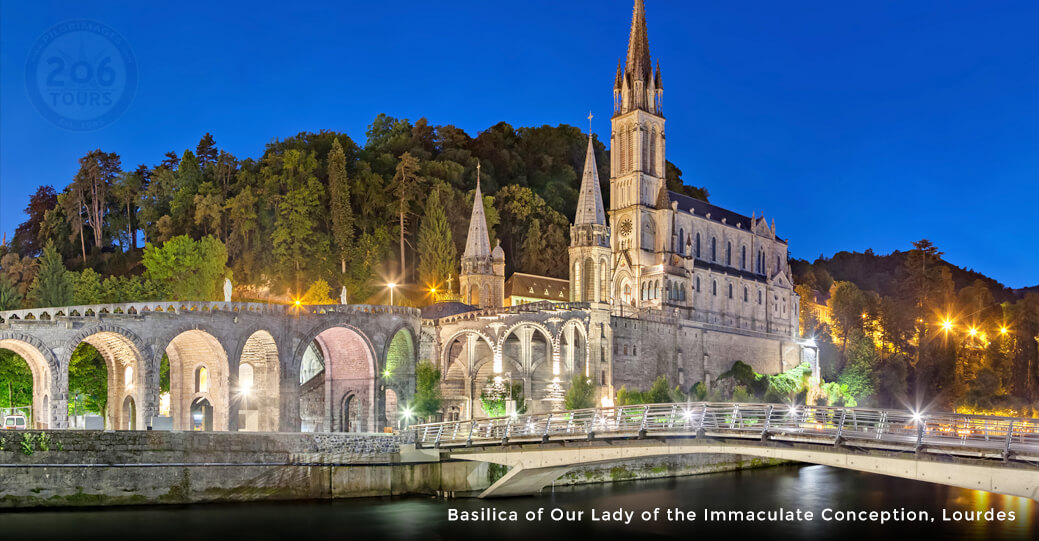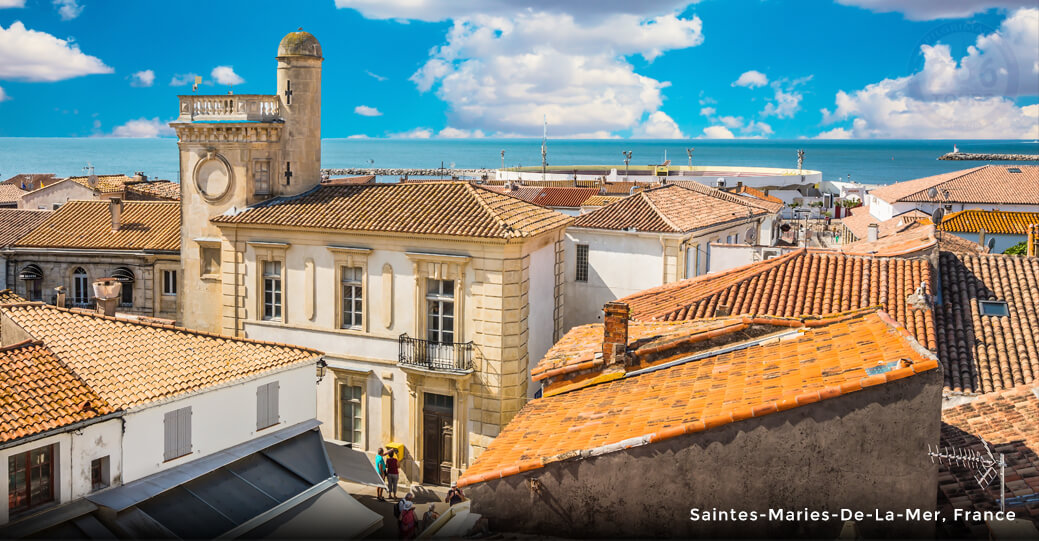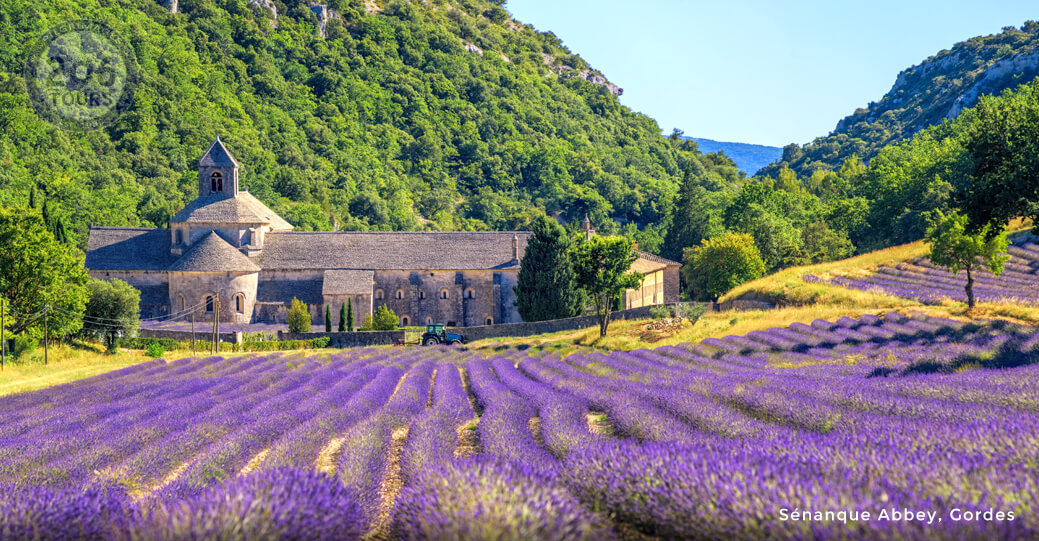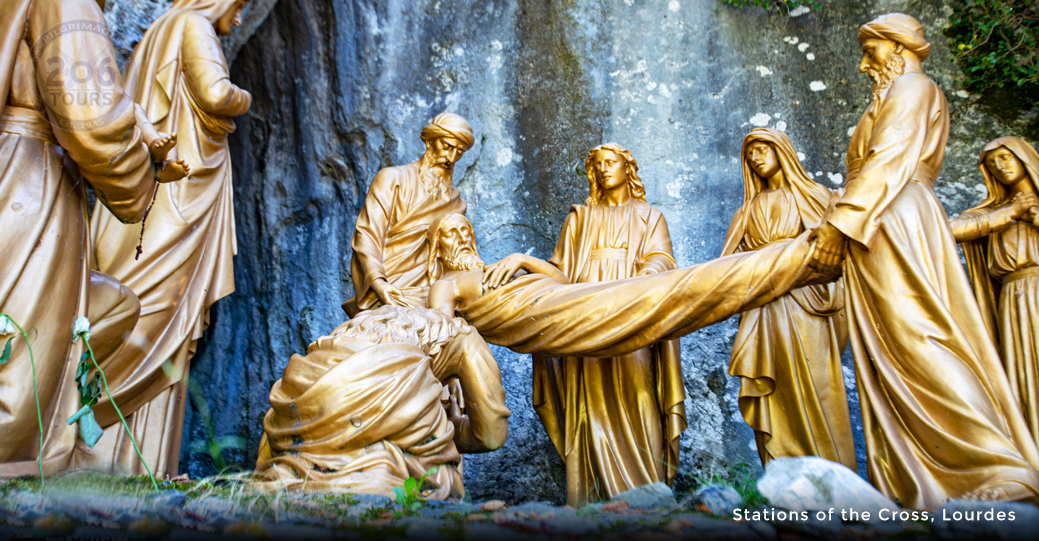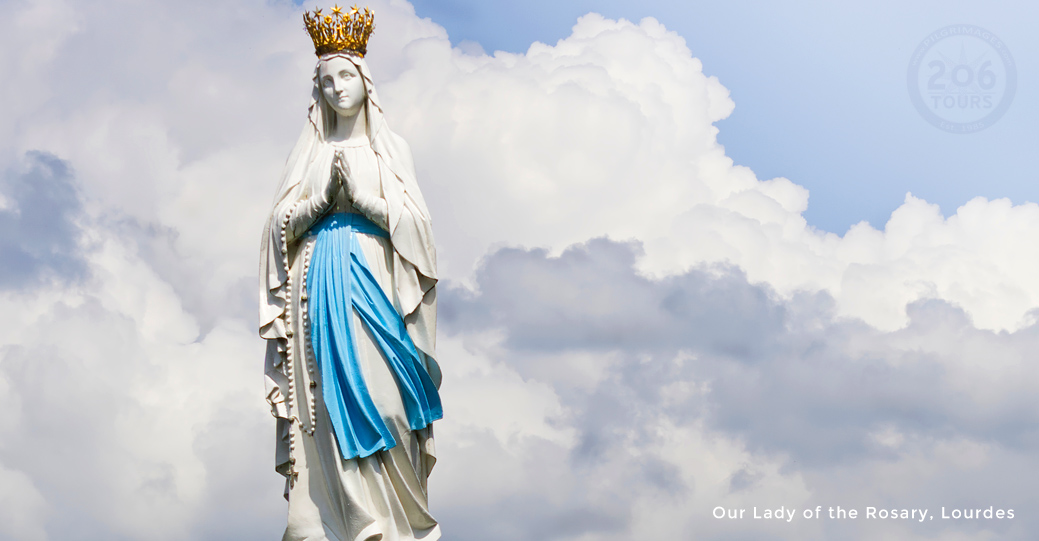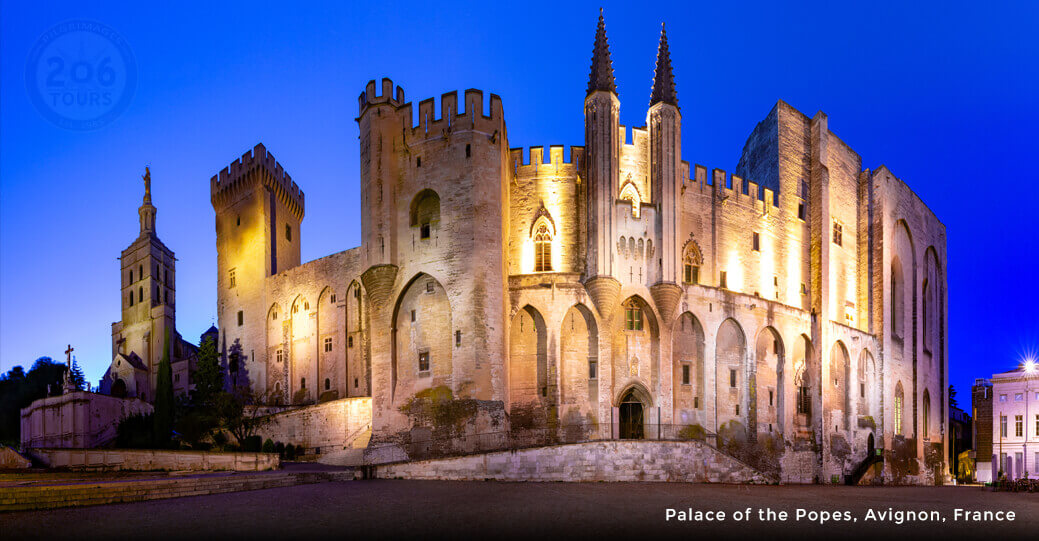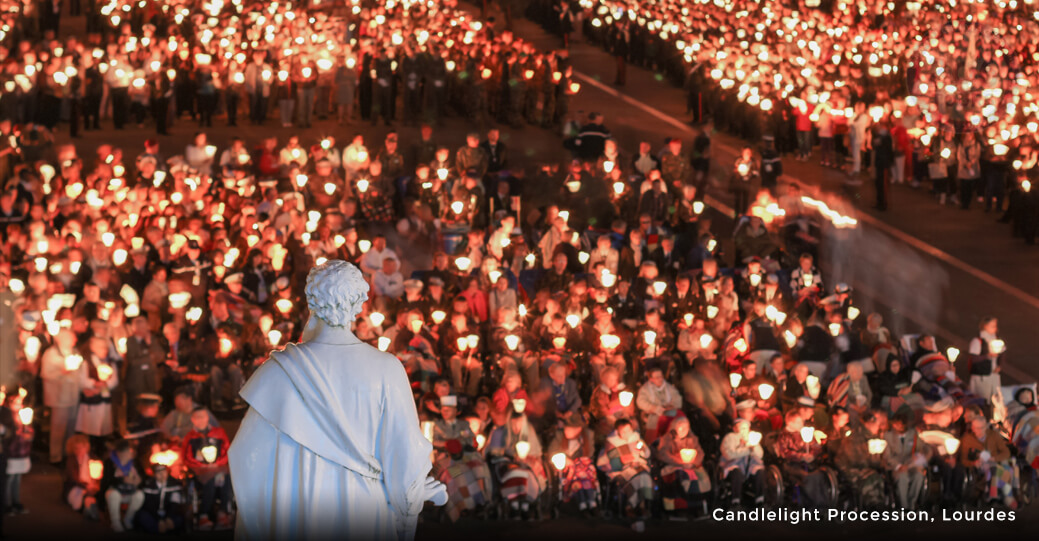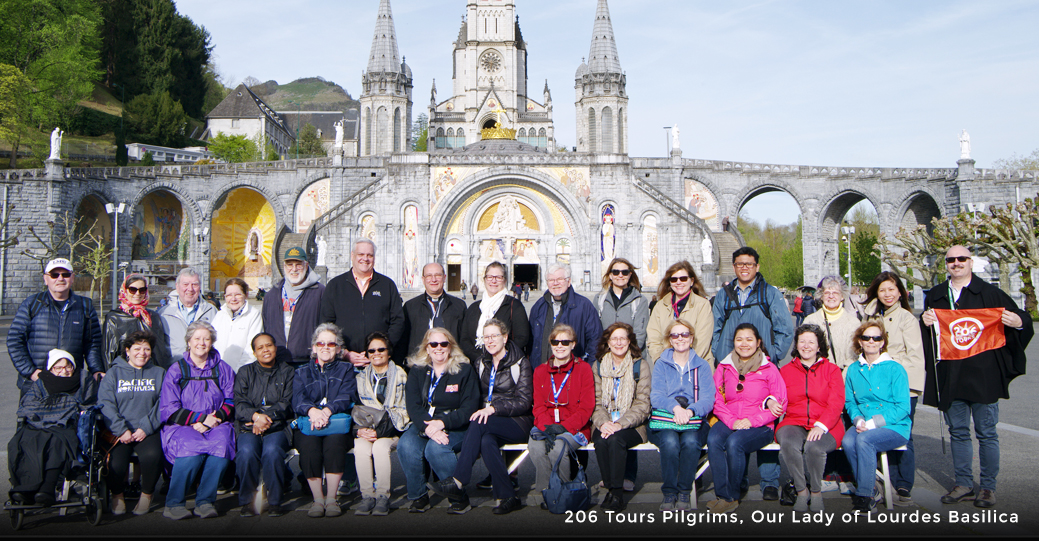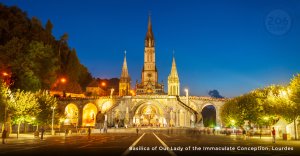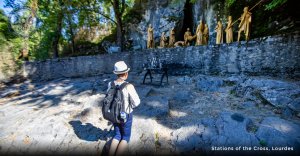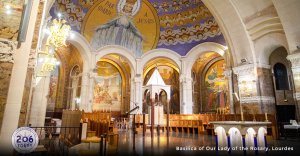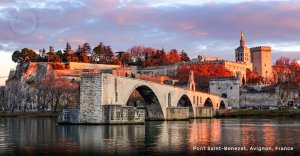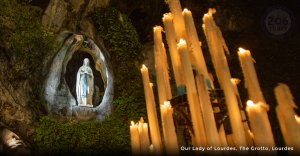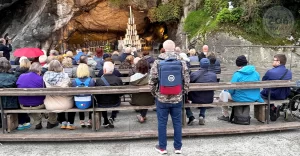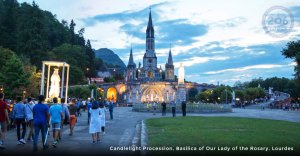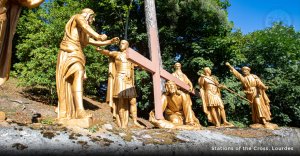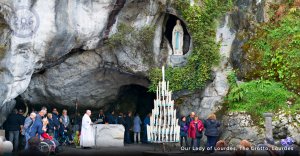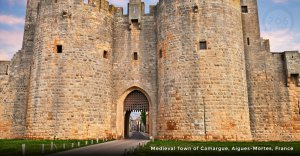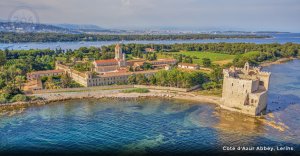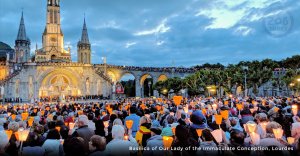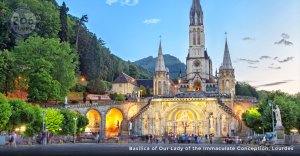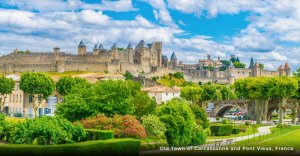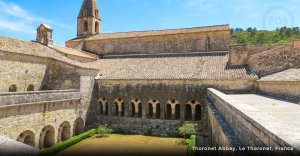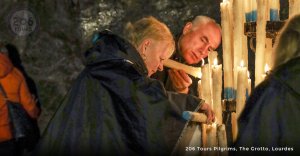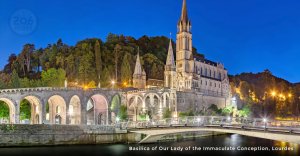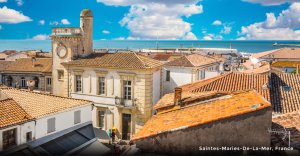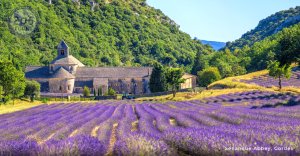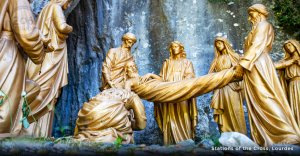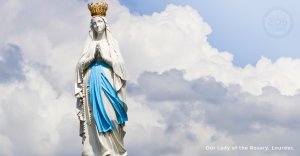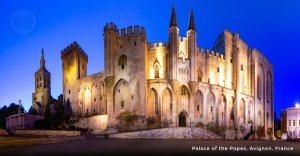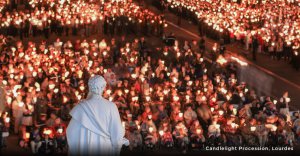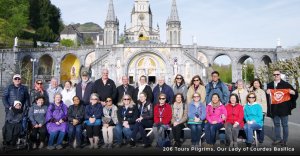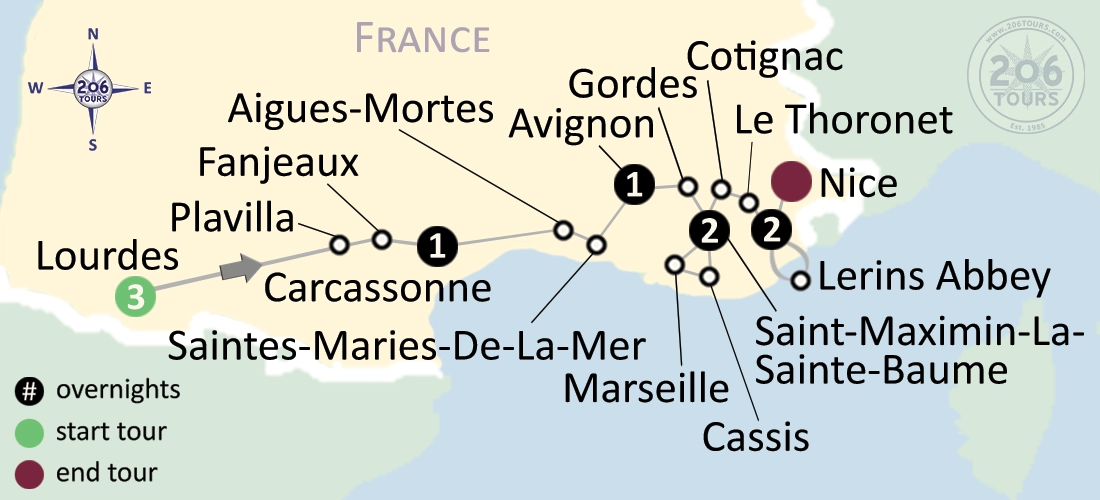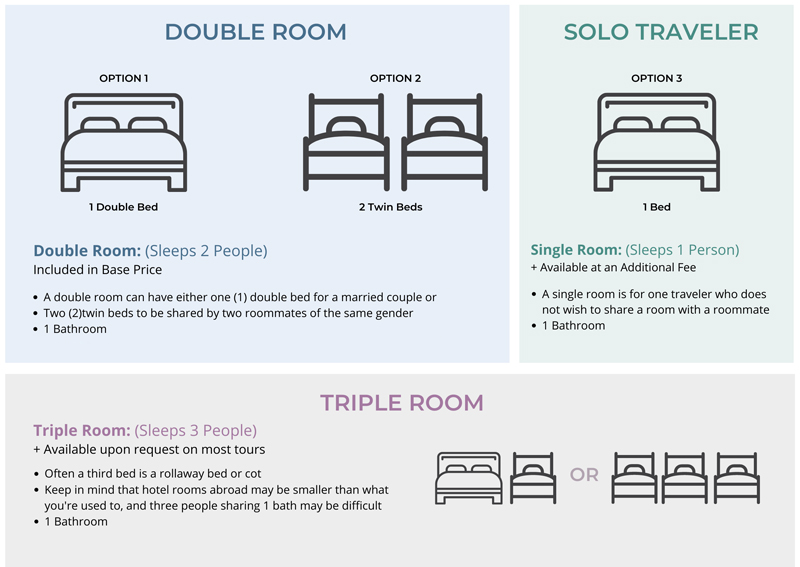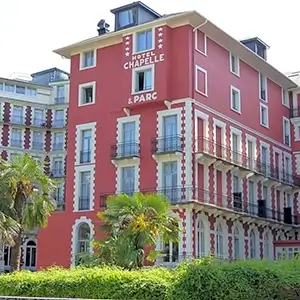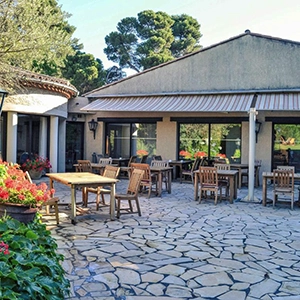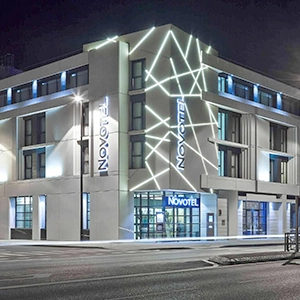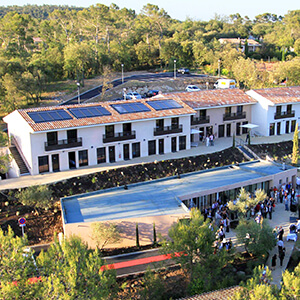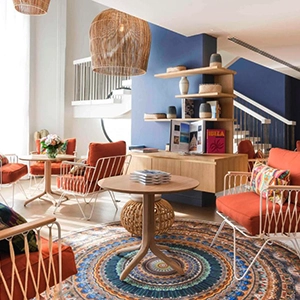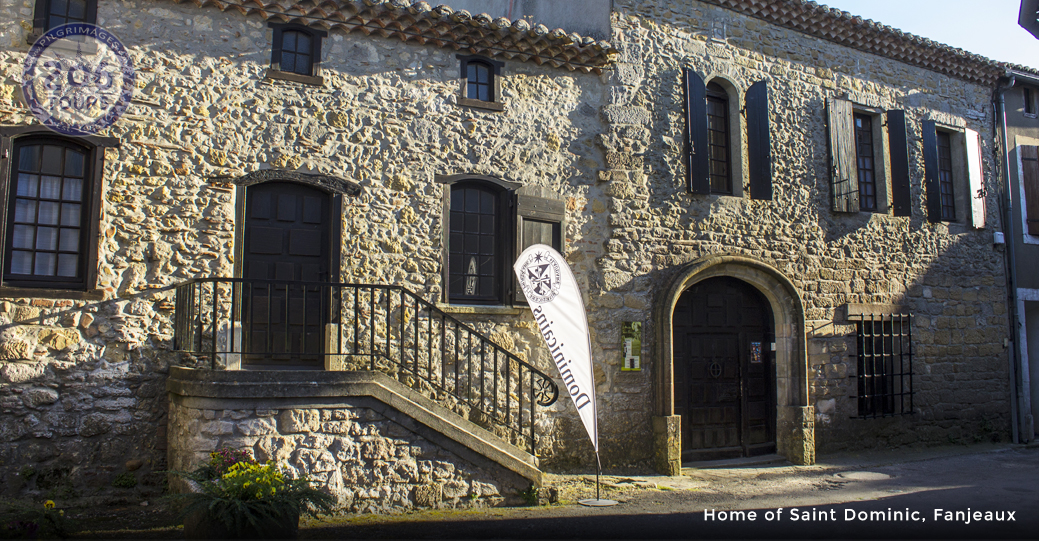Your trip includes
- Round-trip airfare from your desired Airport
- Prepaid seat assignments
- All airport taxes & fuel surcharges
- Catholic Priest
- Mass daily & Spiritual activities
- Hotel accommodations: (or similar) in double occupancy
- ~ 3 nights: Hotel Chapelle Et Parc, Lourdes, France
- ~ 1 night: Mercure Carcassonne La Cité, Carcassonne, France
- ~ 1 night: Novotel Avignon Center, Avignon, France
- ~ 2 nights: Mercure Brignoles Golf de Barbaroux & Spa, Brignoles, France
- ~ 2 nights: Hotel Croisette Beach Cannes Mgallery or Golden Tulip Sophia Antipolis – Hotel & Spa, Cannes, France
- Breakfast and Dinner daily
- Wine and mineral water with dinners
- Transportation by air-conditioned motor coach
- Free WiFi & Water on bus
- Assistance of local guide throughout
- Whisper headsets (where needed)
- Transfers as per itinerary
- Sightseeing and admissions fees as per itinerary
- Luggage handling (1 piece per person)
Not Included
- Lunches, Tips to your guide & driver.
Itinerary
Day 1: Depart for Lourdes
Make your way to your local airport, where you will board your overnight flight(s). Your meals will be served while on board.
Day 2: Arrive in Lourdes
Upon arriving at Toulouse or Pau airport, make your way to the baggage claim area and collect your luggage. Proceed to the arrival hall, where your tour guide and/or driver will greet you. You will embark on a scenic drive to Lourdes. Check in to your hotel, then relax or explore before dinner. Following dinner, you will have free time to attend the candlelight procession (April-October only), guided by the Most Holy Rosary. Following this prayerful experience, you will return to your hotel for an overnight.
Days 3 & 4: Lourdes
Over the next two days, you will stay in a small town in the Pyrenees Mountains. During your time in Lourdes, you will pray and meditate at the site of Our Lady’s apparitions. Our Lady first appeared to Bernadette in 1858 and announced herself as “The Immaculate Conception” near the Grotto of Massabielle. Little Bernadette prayed the Rosary with Our Lady during the first two apparitions and left without exchanging words. During the following apparitions, Our Lady emphasized God’s love for us and the necessity of performing acts of penance for sinners. You will have the opportunity to attend Mass at the Grotto where Our Lady appeared to St. Bernadette. Watch a video presentation that will explain, in detail, the story of Lourdes. Participate in the gesture of the miraculous spring. Here, you may wash your hands, wash your face, and drink the water. Finish with a short prayer, “Our Lady of Lourdes, pray for us. St. Bernadette, pray for us. O Mary, conceived without sin, pray for us who have recourse to thee.” Additionally, you will have the opportunity to experience Christ’s unconditional love as you meditate upon the “life-size” Stations of the Cross that overlook the Grotto of Massabielle. In Lourdes, you will walk in and meditate upon the footsteps of St. Bernadette. Your group will have the opportunity to see Boly Mill, the birthplace of St. Bernadette, and the “Cachot,” an abandoned prison where Bernadette’s impoverished family lived. Following dinner, you can attend the candlelight procession and pray the Rosary before a restful overnight.
Day 5: Lourdes - Plavilla - Fanjeaux - Carcassonne
After breakfast, we will transfer to Plavilla. We will meet with the “Community of the Lamb,” a branch of the Dominican Order. There is now a branch in Kansas City, thanks to the demand of the Bishop of Kansas City. The Community of the Lamb (in French – Communaute de l’Agneau) is the name of a young Roman Catholic religious community. It consists of two branches, the Little Sisters of the Lamb (Petites Soeurs de l’Agneau) and the Little Brothers of the Lamb (Petites Freres de l’Agneau). The community is shaped both by Dominican and Franciscan spirituality, uniting the proclamation of the Gospel through preaching with a commitment to the poor. The community’s motto is: “Wounded, I will never cease to love.” The community members engage in an active door-to-door mission by begging for food. They also share their table with the poor and homeless.
We will continue to Fanjeaux to meet with the Dominican sisters in the monastery of Prouilhe. Here, St. Dominic founded a monastery to house women converted by his preaching in 1206. This monastery, from which the nuns would leave to found other monasteries, such as Saint Sixtus in Rome, extends to host up to 160 nuns. After Mass, continue to Carcassonne and discover this fortified city that is exceptionally well-preserved and beautiful. Its visit will give you an idea of what living in the Middle Ages would have been like. Situated in the south of France, not far from the Mediterranean Sea and the Pyrenees mountains, Carcassonne is known worldwide and has been designated a World Heritage site by UNESCO. A nice walk will take you through small paved streets, from the chateau to the ramparts (view from the outside), passing the Basilica of Saint-Nazaire and the ancient houses. Enjoy dinner and overnight.
Day 6: Carcassonne / Aigues-Mortes / Saintes-Maries-De-La-Mer / Avignon
Following breakfast, we will visit Aigues-Mortes, where King Saint Louis embarked on his first crusade. He built the ramparts around the city and harbor, as he wanted to have an opening on the Mediterranean Sea for his troops. You will visit the Constance Tower, used as a prison for women who were considered heretics after the revocation of the Edict of Nantes. Continue to the Camargue region to discover the sanctuary of the Saintes-Maries-de-la-Mer, dedicated to Mary Salome, Mary Jacob, and the Virgin Mary, called Our Lady of the Sea (Notre Dame de la Mer) since antiquity. In 45-46 AD, the Christian message was shared for the first time in France. It spread rapidly to Arles and the Rhone Valley and then up to Lyon during the 2nd century. It is one of the first pilgrimage sites of France. It is especially popular with the Gypsies who are called in France “Gitans”. They come here to worship their saint patron, Sara, whom they believe was the servant who accompanied the Holy Women. The bodies of the Saintly Women lay here: Mary Salome, mother of James the Major and John the Evangelist, and Mary Jacob, mother of James the Minor and Joseph. They followed Christ and were the first to bring the message of the Good News of his Resurrection. After they fled Palestine, they arrived on the coast of the Camargue with Mary Magdalena, Martha, and Lazarus. In his testament in 542, Saint Cesaire, Bishop of Arles, mentioned a church dedicated to Our Lady of the Raft. In the 9th century, with the invasions of the Sarrasins, a fortified church was constructed. It incorporated the primitive church holding the bodies of the Saint Women. In 1448, King Rene ordered a dig and placed the relics in reliquaries in the upper church. Celebrate Mass and then continue to Avignon for dinner and overnight.
Day 7: Avignon / Gordes / Saint-Maximin-La-Sainte-Baume
Today, we will visit the famous papal palace that UNESCO listed as a World Heritage site. Avignon became the seat of the Papacy between 1309 and 1423 with the popes before they returned to Rome. The construction of the palace began in 1335. It is the largest Gothic construction of the Middle Ages. Two popes were responsible for directing the construction, and they gave the palace its Christian fortress aspect: ramparts, moats, and a magnificent chapel. Six conclaves were held at this location, which resulted in the election of Benedict XII, Clement VI, Innocent VI, Urban V, Gregory XI, and Benedict XIII. The Papacy returned to Rome for political reasons, and an improvement between Catholics and Orthodox followed. Today, the papal palace is open to all and is known for its famous festival d’Avignon, one of the most important international festivals of contemporary entertainment. After lunch, we will drive to Gordes. The Abbey of Senanque is located in the heart of Provence, in a natural setting of lavender and extraordinary beauty. As one of the purest examples of early Cistercian architecture, the Abbey is still used by the community of Cistercian monks that live there today. One can discover the 12th-century Abbey through a guided visit to the dormitory, the abbey church, the cloister, the heating room, and the chapter room. As the monks say, “It is the testimony of men brought together by the call of Christ to follow him more closely that gives meaning to the religious edifice.”
The Cistercians organize their day around three pillars: the liturgical divine office, Lectio Divina, and work. The offices allow the praise and thanksgiving of God together throughout the day, the preference of God over all other activities, and the realization that even during work, the monks are to be turned toward God. The community lives according to the rule of Saint Benedict, which indicates “they are truly monks if they live by the work of their hands”. The brothers make honey, essential oils, jams, beauty products, and numerous products derived from lavender which are sold at the Abbey’s store. Transfer to Saint-Maximin-la-Sainte-Baume to celebrate Mass. Check into the Convent Royal in Saint-Maximin-la-Sainte-Baume, an ancient convent recently turned into a 4-star hotel that kept the spirit of the monastery with its charm and comfort. Here you will enjoy dinner and overnight.
Day 8: Saint-Maximin-La-Sainte-Baume / Marseille / Cassis / Saint-Maximin-La-Sainte-Baume
After breakfast, transfer to Marseille for a panoramic tour, and then we will celebrate Mass. Then, you will visit the Basilica Notre-Dame de la Garde, which rises high above Marseille and watches over the city. Also known as the “Good Mother”, it is dear to the hearts of all the people of Marseille and offers a splendid view of the Mediterranean. You can also discover the brand new museum of the Basilica, with its rich collection of ex-votos and liturgical objects, which testify to the enormous attachment of the Notre Dame de la Garde to history and how culture and architecture are part of prayer. In 1214, a small chapel was dedicated to the Virgin Mary. As the years went by, gifts from sailors allowed the chapel to be enlarged. Today’s Basilica was built in 1853 and has many beautiful ex-votos of sailors who returned safely from naval battles and shipwrecks. An apparition or a miracle did not inspire this devotion to Mary. It comes solely from the trusting devotion to Virgin Mary from missionaries and Marseille sailors. In the 19th century, when missionaries left for Asia or Africa with no hope of return, the statue of the Virgin and her Child of the Basilica was the last image they had of their country.
After lunch, discover the Calanques of Cassis, situated near Marseille. They extend over 12.5 miles of the Mediterranean coast. The word “calanque” designates a valley cut by a river that is then flooded by the sea. In Cassis, the rugged landscape of the Calanques has staggering beauty. In these enchanting surroundings, one can drink a glass of white wine by the port, discover the coastline by boat, or walk the path through Cassis. Marvel at the beauty of creation and view the shoreline via a short cruise ride. Return to Saint-Maximin-la-Baume for dinner and an overnight.
Day 9: Saint-Maximin-La-Sainte-Baume / Cotignac / Le Thoronet / Cannes
After breakfast at the hotel, we will board the bus to Cotignac. We will visit the sanctuary Notre-Dame de Greces in Cotignac, between Cannes and Marseille. As a typical village of the Provence region, Cotignac is marked by the apparitions of the Virgin Mary and the Child Jesus, as well as that of Saint Joseph. These apparitions make this small village the only one in the world where the entire Holy Family has appeared! Pilgrims today can visit the sanctuary and pray with the community of Saint-Jean, a dynamic renewal community of apostolic brothers and sisters. The sanctuary was born at the time of the apparition of the Virgin on August 10, 1519. As he had done each day, Jean de la Baume, a shepherd in the region, began his day with prayer. The Virgin Mary appeared and asked him to build a church at this precise spot so pilgrims might come to receive the grace and gifts she wished to grant them. Over the years, the chapel became a sanctuary, and in the 17th century, it was the site of a significant miracle for the French. After years of sterility for the royal couple, Anne of Austria and Louis XIII went on a pilgrimage to Cotignac, and thanks to their faith, Louis XIV was born. In thanksgiving, King Louis XIII consecrated France to the Virgin Mary. King Louis XIV went in 1660 to thank the Virgin Mary for his life. We will continue to Le Thoronet, midway between Marseille and Nice, and discover the beautiful Abbey of Thoronet, nested in the green hills of the backcountry of Provence. Its simplistic architecture and light make it one of France’s most remarkable examples of Cistercian architecture. The site is listed as a national historical monument. No monks have lived in the Abbey since 1971 and the French Revolution. However, the Abbey has regained a spiritual dimension thanks to Monsignor Rey, Bishop of Frejus-Toulon. Following his direction, a Mass with Gregorian chant is celebrated at the Abbey every Sunday. Next to the Abbey, you may discover the monastery of the Torrent de Vie. A young community of contemplative and eremitic sisters, “the Monastic Family of Bethlehem and of the Assumption of the Virgin”, will welcome you. They are a testimony of the renewal of Faith in France. Celebrate Mass in the monastery with the Sisters of Bethlehem. Continue to Cannes for dinner and overnight.
Day 10: Cannes/ Lerins Abbey / Cannes
After enjoying breakfast, we will board a boat to Lerins Abbey to celebrate Mass. Following Mass, visit the Benedictine Abbey of Lerins on the island of Saint Honorat, just in front of Cannes, on the Azur coast. The brothers will invite you to share in a climate of silence, prayer and contemplation. Their relationship with the world is illustrated by the Abbey’s position on the island of Saint-Honorat, near the coast but separated by the sea: to be “in the world” without being “of the world”. The brothers live by the rule of Saint Benedict, which combines prayer and work. The Abbey is known for its production of good wines and liqueurs. In the 5th century, Saint Honorat founded the community on the island of Lerins, which today has taken the name of the Saint. This monastery rapidly became one of the most significant centers of Western monastic tradition in its early years and was responsible for inspiring many other monastic foundations. Several well-known Saints spent time at the Abbey of Lerins learning about monastic life. Saint Patrick spent time here before going to evangelize Ireland. You will meet with a brother of the religious community, enjoy a wine tasting, and then return by boat to Cannes for dinner and an overnight.
Day 11: Cannes / Nice Airport
After breakfast, transfer to Nice airport and say “Au Revoir” to your fellow pilgrims. Board your flight to return home.
*206 Tours Disclaimer:
Occasionally local religious and national holidays, weather, traffic conditions and other events may necessitate changes in the sequence of events or the missing of certain events/places. Though every effort will be made to follow the itinerary, it should be considered as an indication, rather than a contract of events and places to be visited.

Special Clergy Discount
A Clergy Discount is available to all members of “Clergy” within the Catholic Church. This includes Seminarians, Deacons, Brothers and Sisters, Priests, Monsignors, Bishops, Cardinals, and His Holiness.

Earn a Free Trip
For groups of 20 or more, you may choose your own departure and earn FREE trips.

